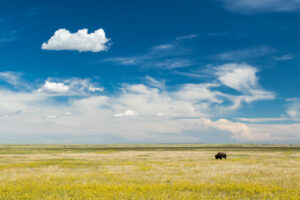
Environment
The sixth extinction
The planet is in the midst of drastic biodiversity loss that some experts think may be the next great species die-off. How did we get here and what can be done about it?
- 4895 words
- 20 minutes
This article is over 5 years old and may contain outdated information.
Wildlife

Almost 30,000 species assessed, approximately 50,000 to go.
That’s just one of the many mind-boggling takeaways from the recently published report Wild Species 2015: The General Status of Species in Canada. The report, which the Species at Risk Act requires to be published every five years, estimates that there are about 80,000 known species in Canada (excluding viruses and bacteria), which is about 10,000 more than were estimated to exist in the 2010 report.
Here’s a by-the-numbers breakdown of some of the 2015 report’s other findings.
29,848 The total number of species assessed
5 The number of kingdoms among which the species assessed were divided
1% The approximate amount of known species in Canada represented by the protozoa kingdom (the smallest amount among the five kingdoms)
68% The approximate amount of known species in Canada represented by the animal kingdom (the largest amount among the five kingdoms)
Nearly 70% The amount of known animal species in Canada that are insects
578 The number of migratory species assessed, the majority of which were birds (71 per cent) and fishes (19 per cent).
1st Where Ontario ranks among the most species-rich regions in the nation, given the taxonomic groups the report assessed. The province’s 15,858 species put it ahead of British Columbia (14,838 species) and Quebec (14,341 species).
80% The amount of species assessed that are considered secure. The remaining 20 per cent are at some level of risk of extinction.
1,659 The number of species ranked as “presumed extirpated,” “possibly extirpated,” “critically imperiled,” and “imperiled” at the national level in Canada. The groups that have the most of these species are, in descending order, vascular plants, bryophytes (liverworts, hornworts and mosses), beetles, macrolichens, and moths and butterflies
2,394 The number of species identified as exotic at the national level. The report refers to exotic species as those “that have been moved beyond their natural range as a result of human activity.”
1,315 The number of exotic species at the national level that are vascular plants, which represent 55 per cent of all exotic species assessed in the report
Are you passionate about Canadian geography?
You can support Canadian Geographic in 3 ways:

Environment
The planet is in the midst of drastic biodiversity loss that some experts think may be the next great species die-off. How did we get here and what can be done about it?

Wildlife
An estimated annual $175-billion business, the illegal trade in wildlife is the world’s fourth-largest criminal enterprise. It stands to radically alter the animal kingdom.

People & Culture
Naming leads to knowing, which leads to understanding. Residents of a small British Columbia island take to the forests and beaches to connect with their nonhuman neighbours

Environment
Environment and Climate Change Minister Steven Guilbeault made big commitments at the international biodiversity conference held in Montreal in December. What does that mean on the ground?